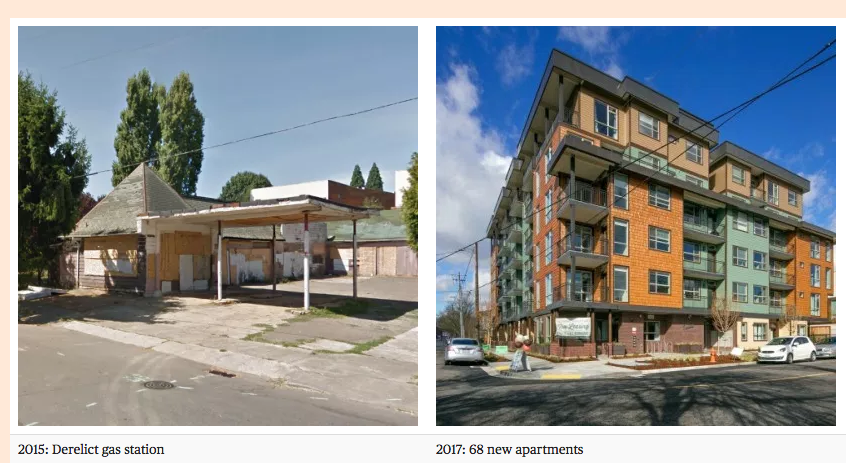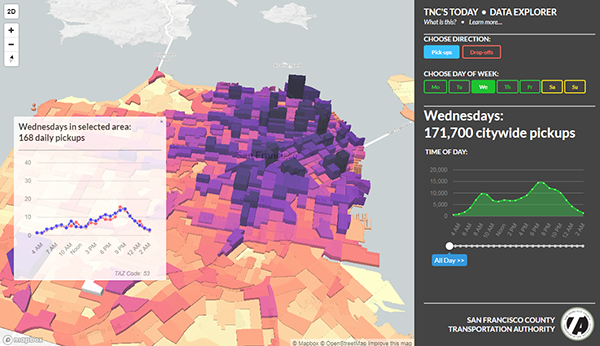What City Observatory did this week
1. Cultural appropriation: Theft or smorgasbord? A recent Internet furor erupted over a Portland burrito stand that copied its recipe from that of street vendors in Mexico. An essential feature of cities and economic development, as Jane Jacobs noted, is that they’re constantly remixing ideas. When is borrowing and adapting ideas from others acceptable, and even useful, and when is it theft? There’s some interesting discussion about this issue.
2. Is historic preservation just thinly veiled NIMBYism? “Not in my backyard” or NIMBY has acquired a bad name, and its now mostly taboo to complain about the number, income levels, skin color or lifestyle of the prospective neighbors who might occupy new housing in one’s neighborhood. A more refined and politically correct way to object to density is to invoke historic preservation. This option is largely available to those with significant resources, particularly when it comes to designating entire neighborhoods for historic status.

3. Pricing roads for autonomous vehicles. Portland and other cities are considering what kind of policy framework they ought to put in place for a world of autonomous vehicles. We have a suggestion: cities should use this major shift in technology to put in place real-time, dynamic road pricing that reflects back to road users–particularly those traveling at the peak hour–the costs of the infrastructure they use. In large part, firms like Lyft and Uber are already capturing this value through surge pricing, but what it really reflects is the huge public costs incurred to build, maintain, and expand road capacity to meet demand in the heart of our cities.
Must read
1. The Clear and Present Danger of Supply Skepticism. In a critical review of Tom Agnotti’s book “Zoned Out,” former New York City Housing Commission Vicki Been skewers the claim that down-zoning will somehow make urban housing more affordable. “If the supply of housing is not increased, to accomodate growth, rents will go up. There are no other plausible outcomes . . . Unless we build new housing, people who can afford higher rents will outbid poorer current residents for existing housing.”
2. Liquor licenses and livable neighborhoods. Sometimes there’s nothing that adds to the conviviality of an urban neighborhood more than the presence of of a corner bar or local tavern that provides a place for meeting and relaxation. Every state has its own laws for regulating and licensing liquor serving establishments, and many states greatly limit the number of licensed premises. In places like New Jersey, the limited number of licenses inflates their value and means that there are fewer places to have a round of drinks with friends. Steven Pedigo argues that liberalizing liquor control laws would help facilitate neighborhood revitalization.
3. Driving deeper into debt. American car buyers are increasingly being driven into debt by new car purchases. Last year, fully one-third of trade-in vehicles had more money owing on their original loans than the cars were worth; leading these buyers to roll an average of $5,000 in unpaid loan balances into their new car loan. The growing number of underwater car loans is propelled by rising prices of new cars (average sale: $35,000), a weak market for used cars, and the tendency of buyers to finance cars for much longer periods of time, meaning that less of their car payment goes to pay principal. A growing fraction of new car loans are financed for 84 months (7 years).
New ideas
San Francisco Ride-Hailing Study. The San Francisco County Transportation Authority has published a breakthrough study of Uber and Lyft activity. While these ride-hailing companies are notably reticent to share their data (in California, they’ve stonewalled city governments), SFCTA hired researchers from Cornell University to tap into the two company’s public-facing APIs (Application Programming Interface) to monitor the number and origins and destinations of hailed vehicles. We’ll have a lot more to say about this very innovative and public-minded use of big-data. But in the mean time, its worth having a look at this report, which provides very detailed information about the penetration of ride-hailing in different San Francisco neighborhoods.


